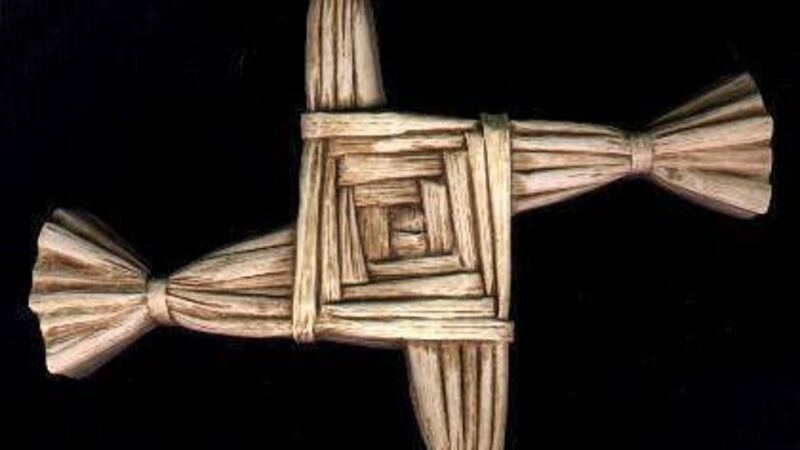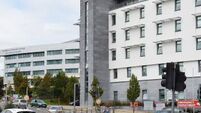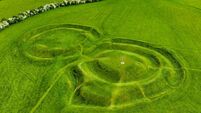Who was St Brigid - Mary of the Gael?

St Brigid's Cross
LÁ Fhéile Bríde - celebrates Ireland’s only female patron saint today, February 1. Next year will mark our first bank holiday on this date.
The campaign for this day was launched in 2019 when Melanie Lynch from Herstory.ie wrote to the Irish government calling for a day to celebrate Mna na hEireann.
“Already Ireland has three bank holidays dedicated to men – Jesus, Stephen, and Patrick,” wrote Melanie.
“In the 21st century, we still are waiting for a bank holiday to celebrate an Irish woman.”
With the news recently announced of St. Brigid’s ascension to the realm of national bank holiday saints, we find out more about the life of the woman also known as Mary of the Gael.
Brigid was born around the year 453 AD at Faughart near Dundalk, County Louth. Her father Dubhthach was a pagan chieftain and her mother Broicsech was a Christian slave. Brigid was influenced by the Christian preachings of St. Patrick from a young age. In the Book of Armagh, there is a reference to the friendship that is said to have developed between the pair later in life: ‘Between Patrick and Brigid, the columns of the Irish, there was so great a friendship of charity that they had but one heart and one mind. Through him and through her, Christ performed many miracles.’
When Brigid came of age, her father was keen to marry her off to a husband of high standing in society. But this was not to be, as Brigid was determined to preserve her chastity for God.
A firm believer in prayer, Brigid prayed for God to make her physically unattractive to men. Her prayers were perhaps answered when she developed a pox that disfigured one side of her face. Despite her father’s protestations, Brigid regularly donated many of his possessions to the poor who came knocking at their door. When Brigid gave away his jewel-encrusted sword to a begger, it is said that Dubhthach finally realised his daughter’s holiness, and gave his daughter leave to pursue her plan of forming the first community of nuns in Ireland.
Brigid received the veil with seven other girls and each one selected a beatitude in which she wished to excel. Brigid chose ‘Blessed are the merciful’. She asked the King of Leinster for land on which to build her new oratory and he promised her as much land as her cloak could cover. Six months later, Brigid returned with her cloak and in front of the king she gave the four corners of the cloak to four nuns who spread it out over the entire area of the Curragh. It was here in 485 that Brigid founded Kildare Abbey (church of the oak), the first double monastery in the world for both nuns and monks.
During Brigid’s blessing as abbess, Saint Mel is thought to have been inspired by God and inadvertently read the rite of consecration of a bishop. This could not be undone under any circumstances. Hence, Brigid can be seen holding a bishop’s staff in early pictures. She appointed Saint Conleth as spiritual pastor and for centuries, Kildare was ruled by a double line of abbot-bishops and abbesses who worked side by side healing the sick and helping the poor. As abbess of Kildare, Brigid was regarded as superior general of all convents in Ireland, outranking bishops and with jurisdiction over all the churches in her area. St Brigid held more power in the Irish ecclesiastical world of her day than any woman alive today.
Brigid travelled the country by chariot, converting pagan women to the Christian faith and inspiring many to join her congregation. As it was a dangerous time for women to travel, she gained a fearless reputation, leading to her patronage of travellers and sailors.
Many miracles of healing are also attributed to Brigid who is said to have given sight to the blind, speech to the mute, and a cure to the sick. Her sphere of influence was such that her patronage covers a diverse range of subjects, including babies, boatmen, children of unmarried parents, fugitives, and midwives.
Brigid died in her seventies, c. 525, and was interred to the right of the high alter in Kildare Cathedral.
Her remains were later exhumed and transported to Downpatrick to lie alongside two other patron saints of Ireland, St, Patrick and St, Columcille. However, her skull was brought by three Irish knights (for unknown reasons) to Portugal, where it has since been kept in a little church at Lumiar, just outside Lisbon. In 1929, a small portion of St. Brigid’s skull was given back to the people of Ireland by the Cardinal of Lisbon and placed in St Brigid’s Church in Killester, Dublin.
One of the most remarkable women of Irish history, St Brigid is still remembered and celebrated 1,500 years later as the only female patron saint of Ireland, and the first Irish woman to be celebrated with a national bank holiday in Ireland.







 App?
App?




